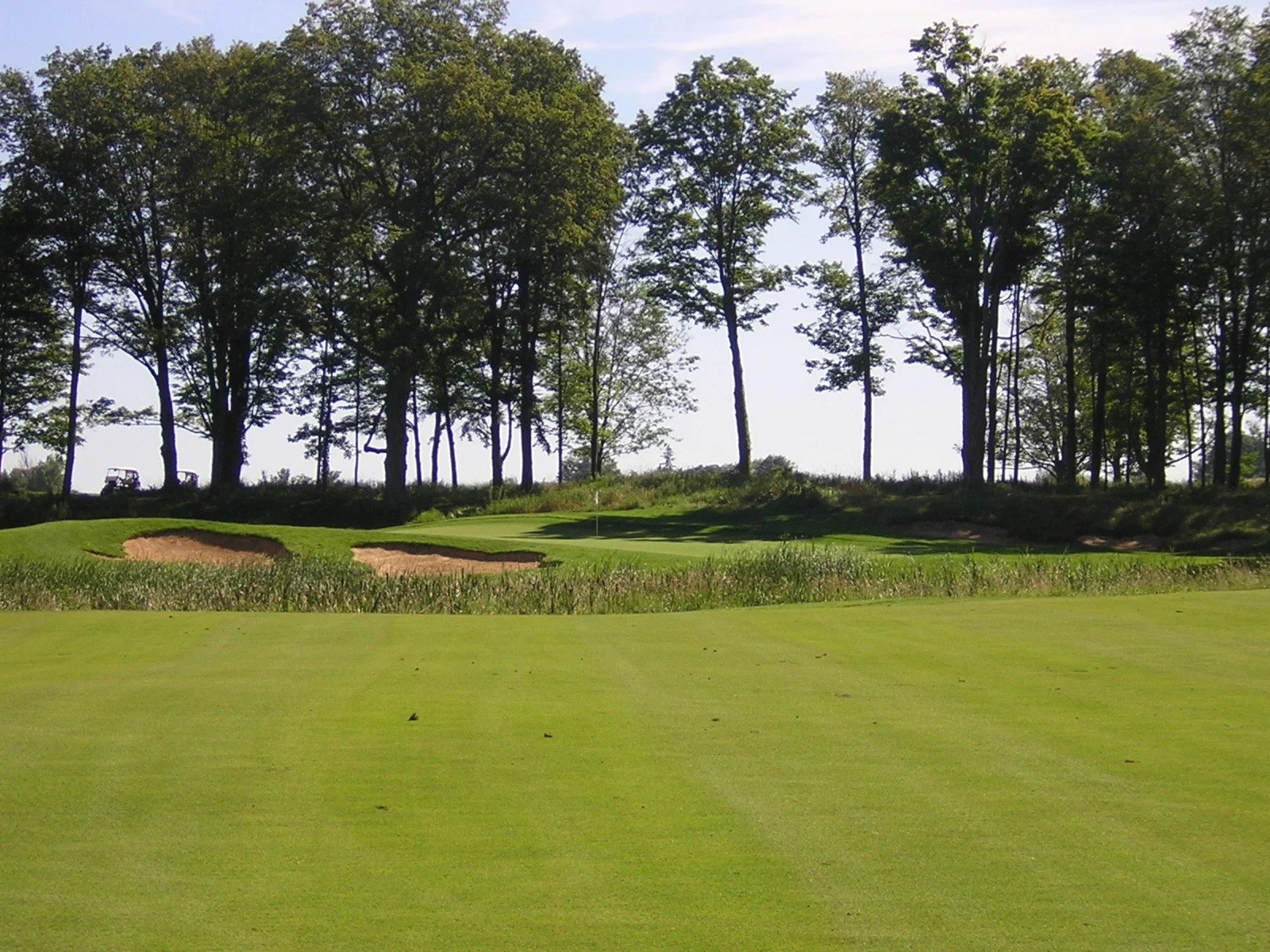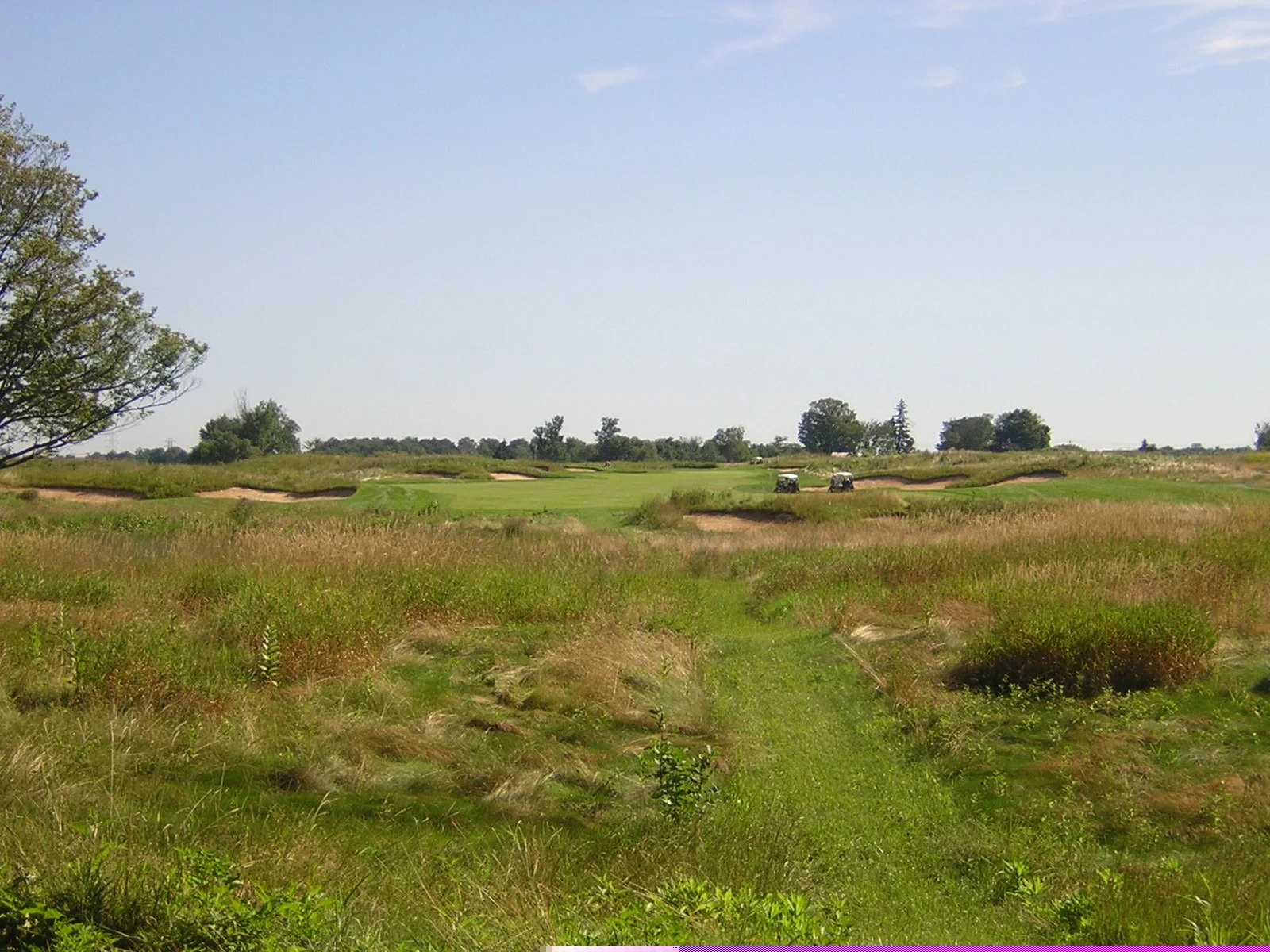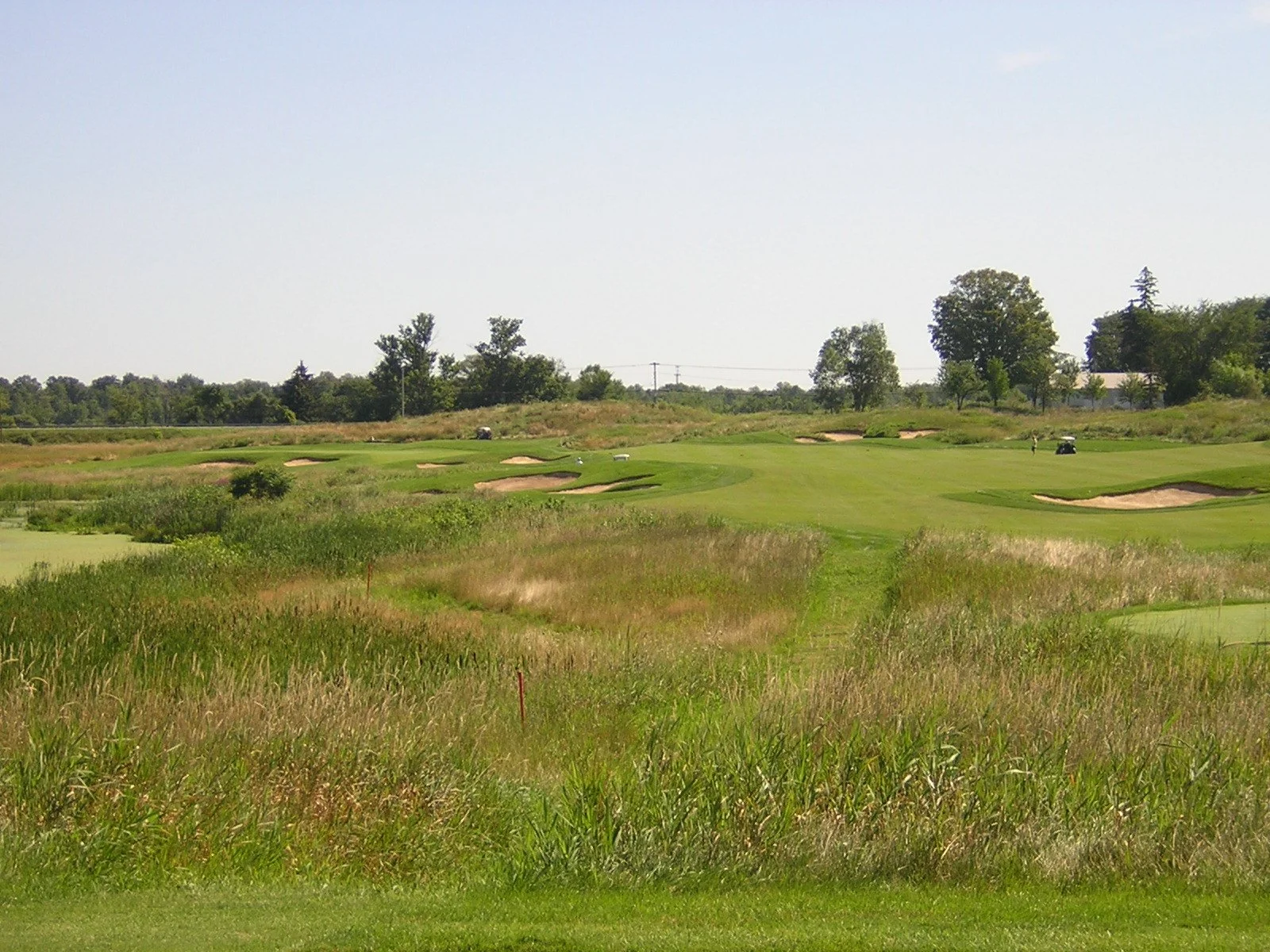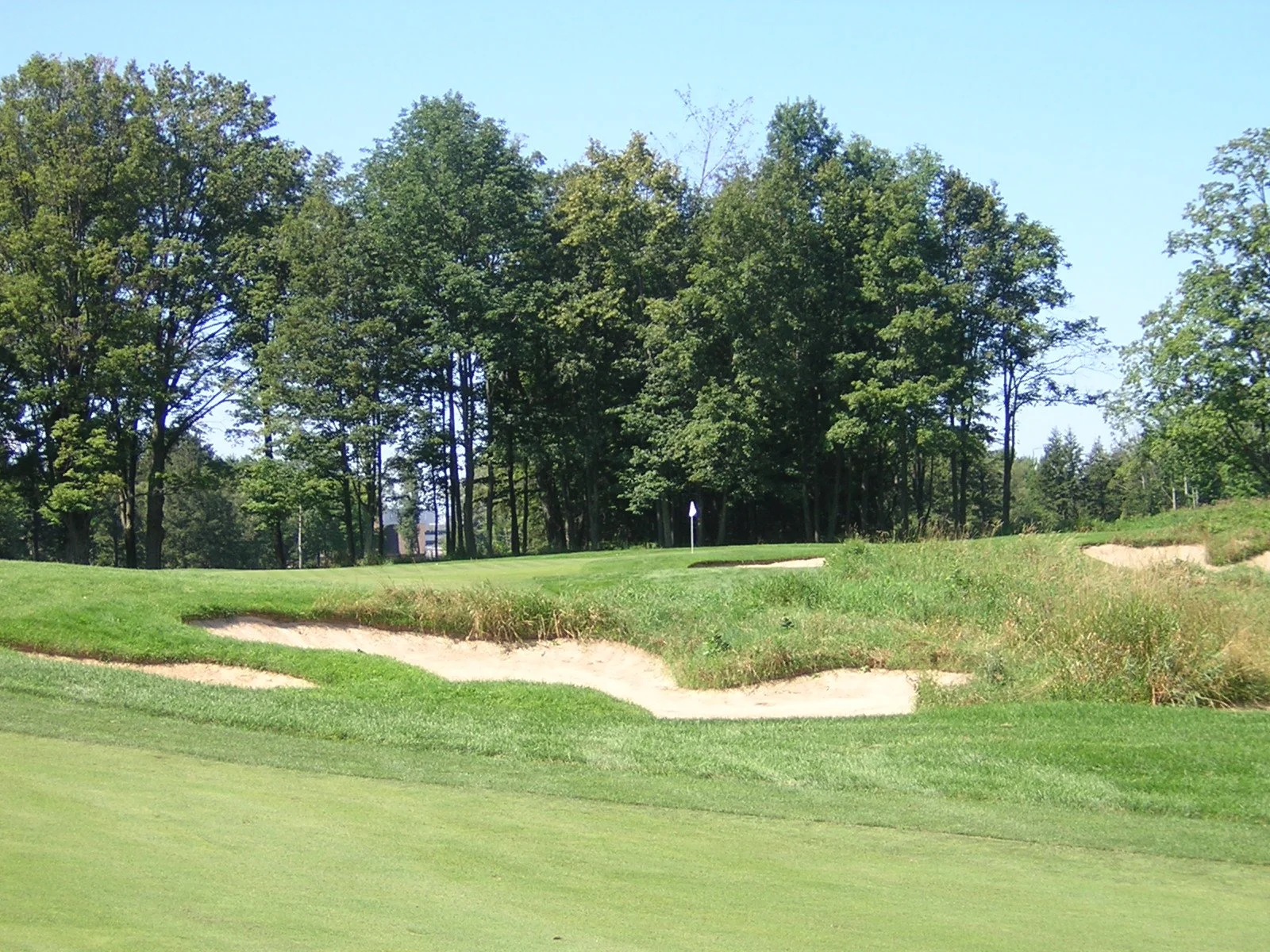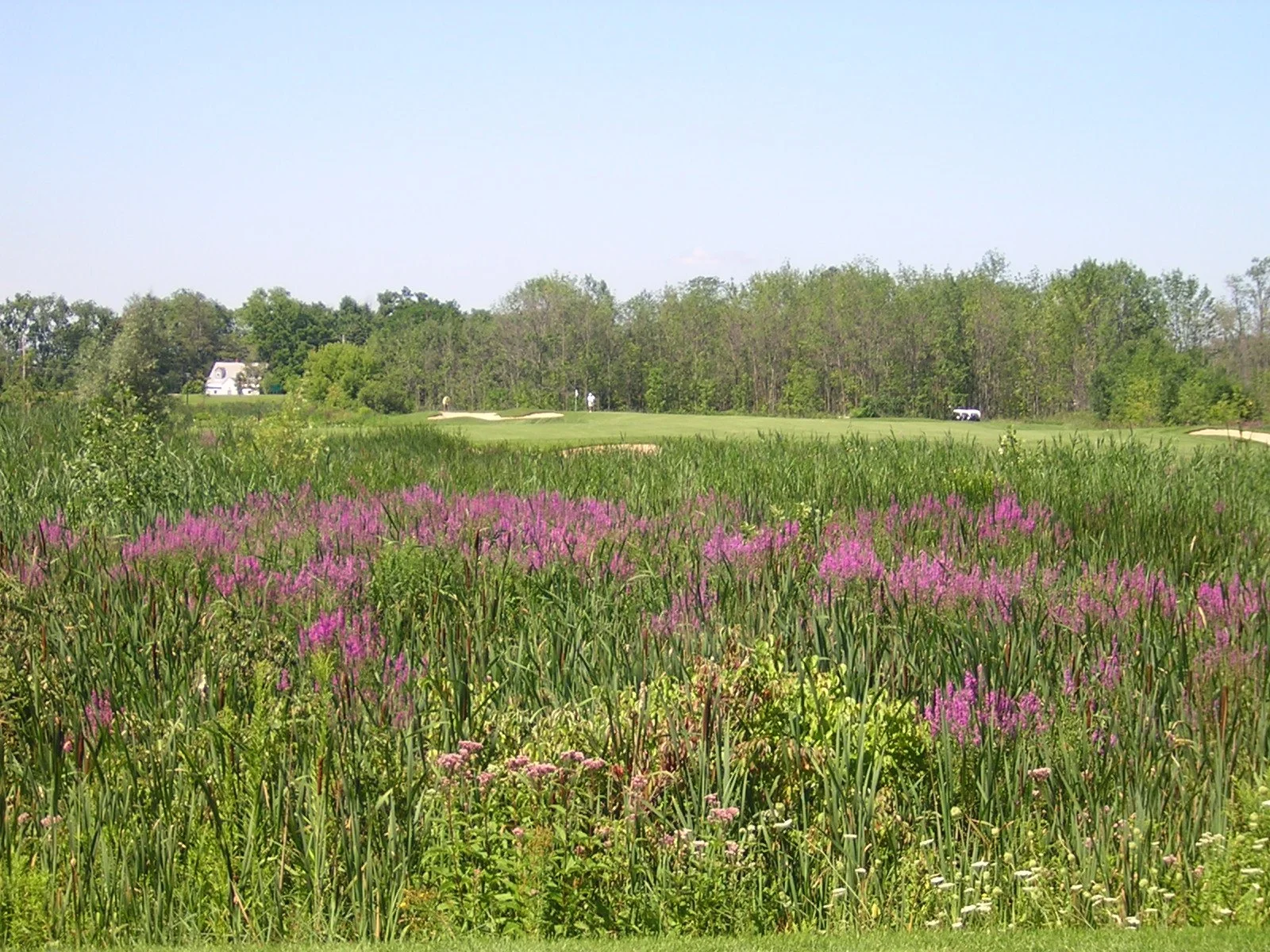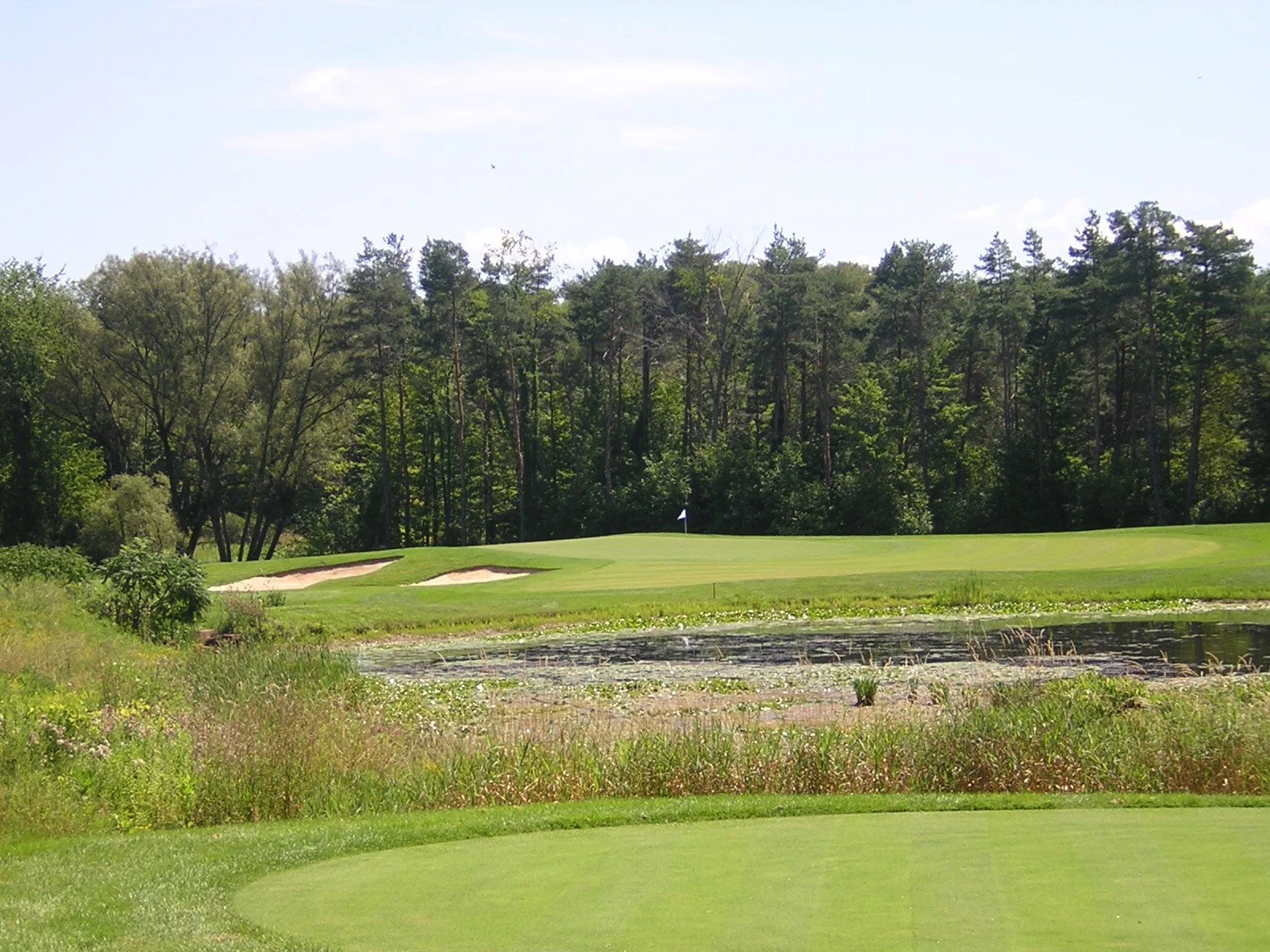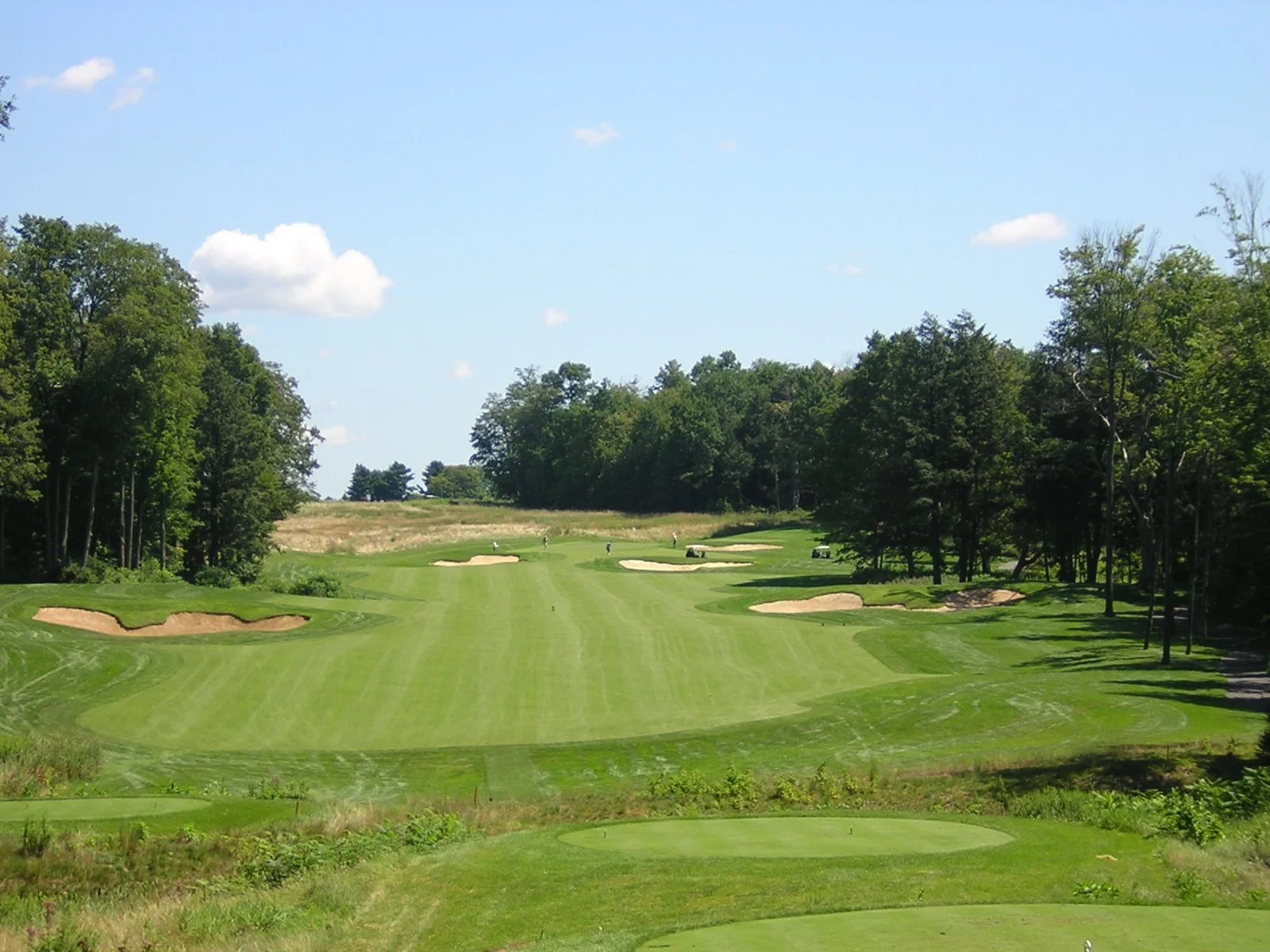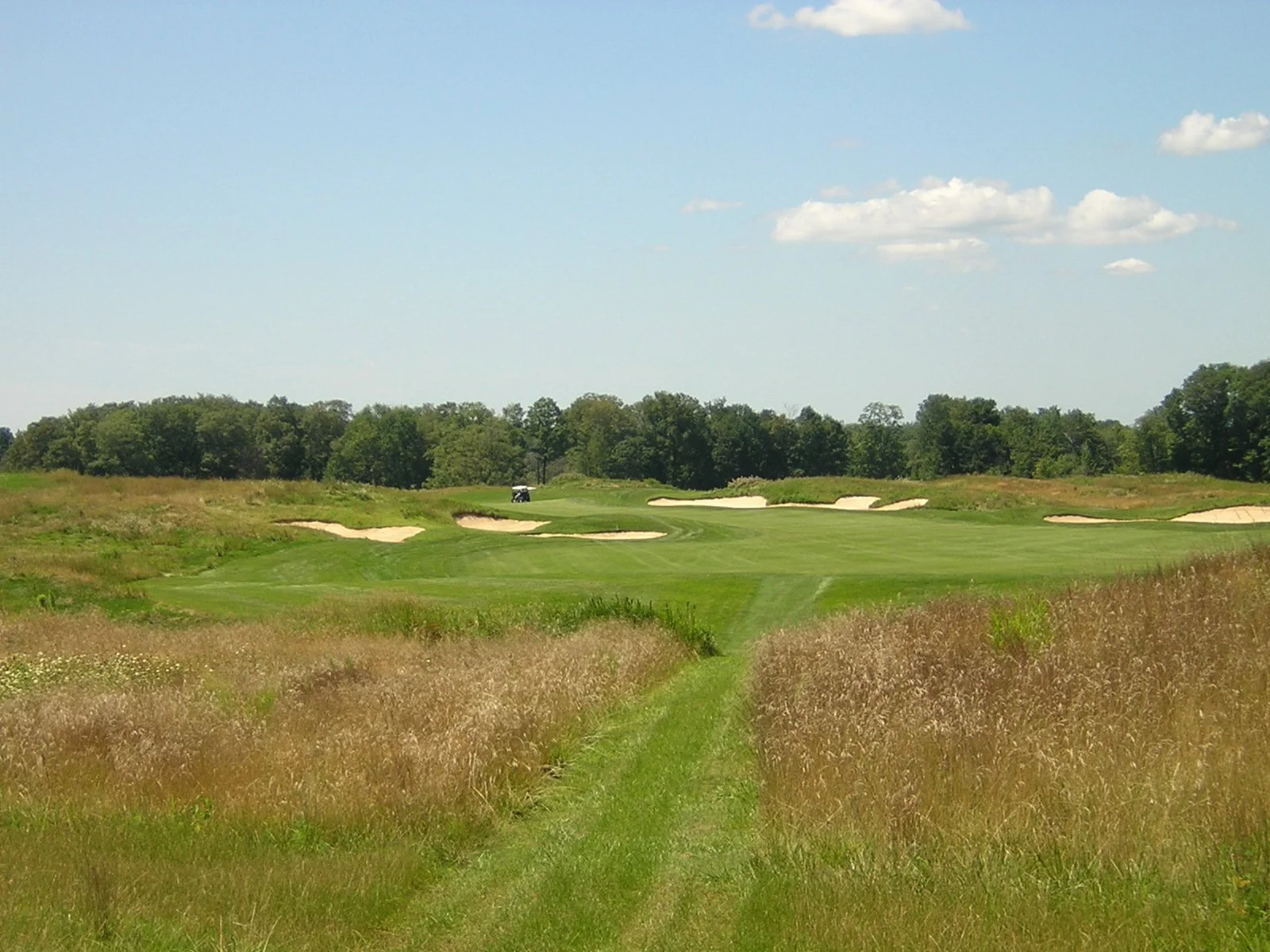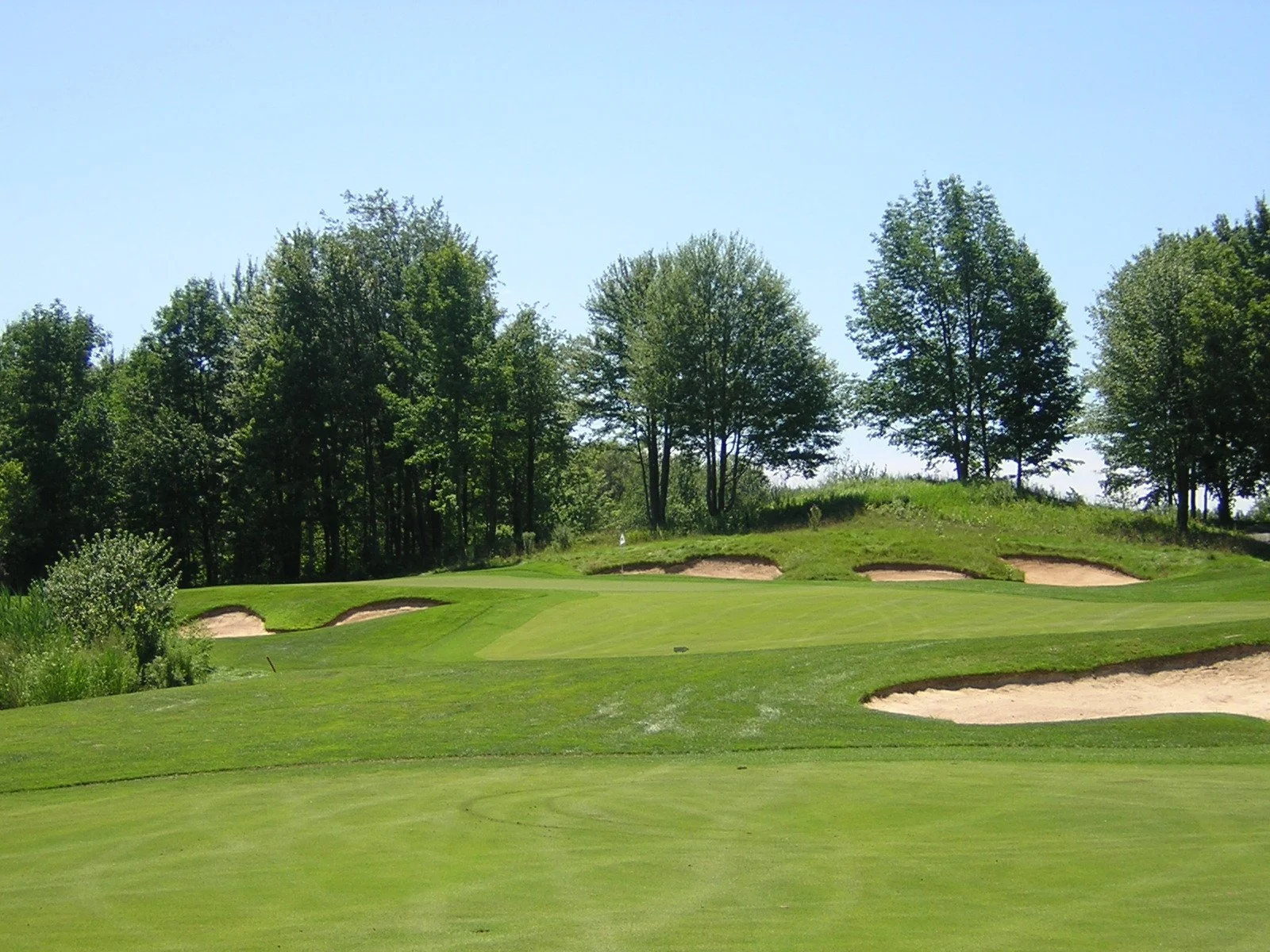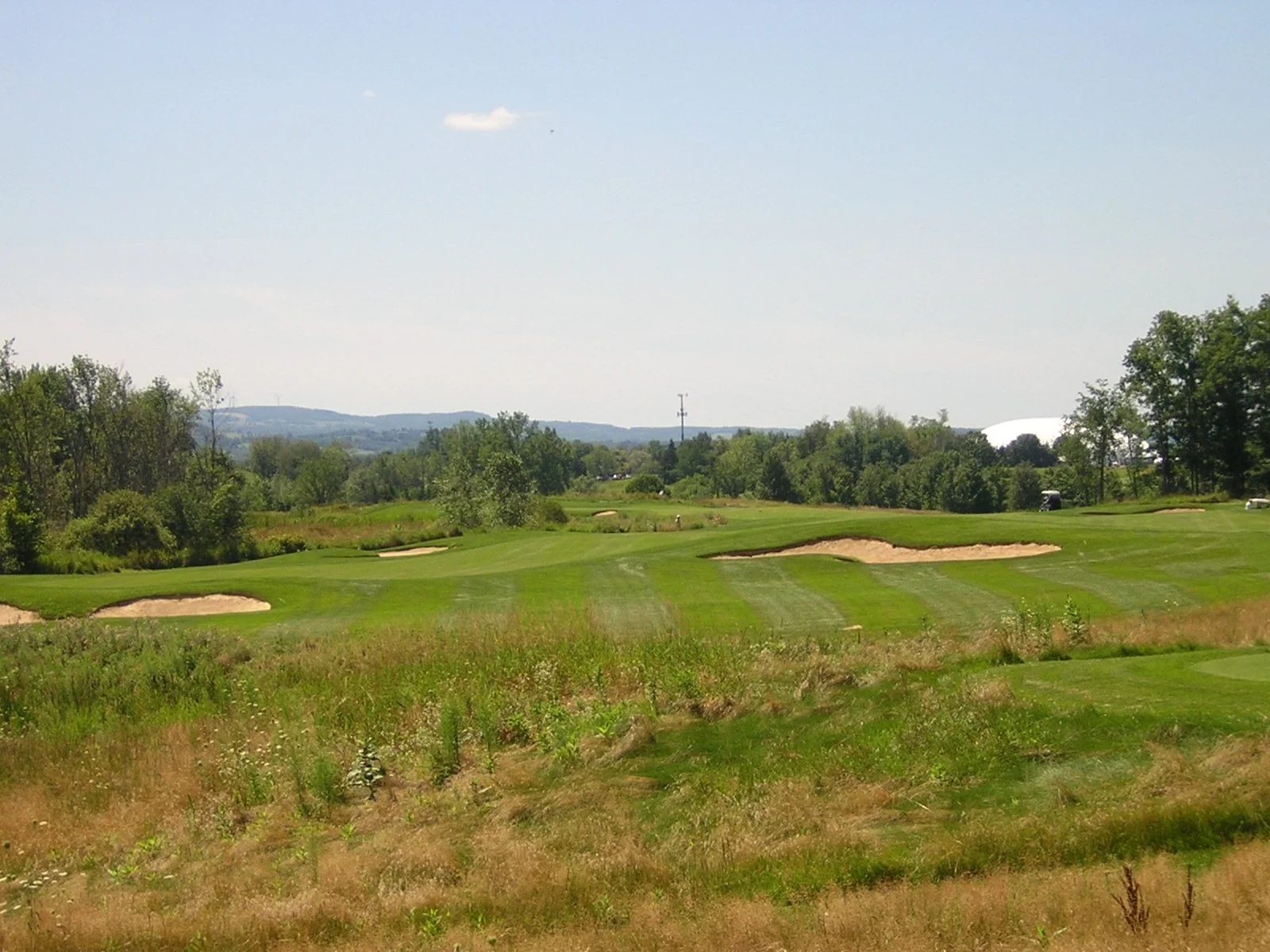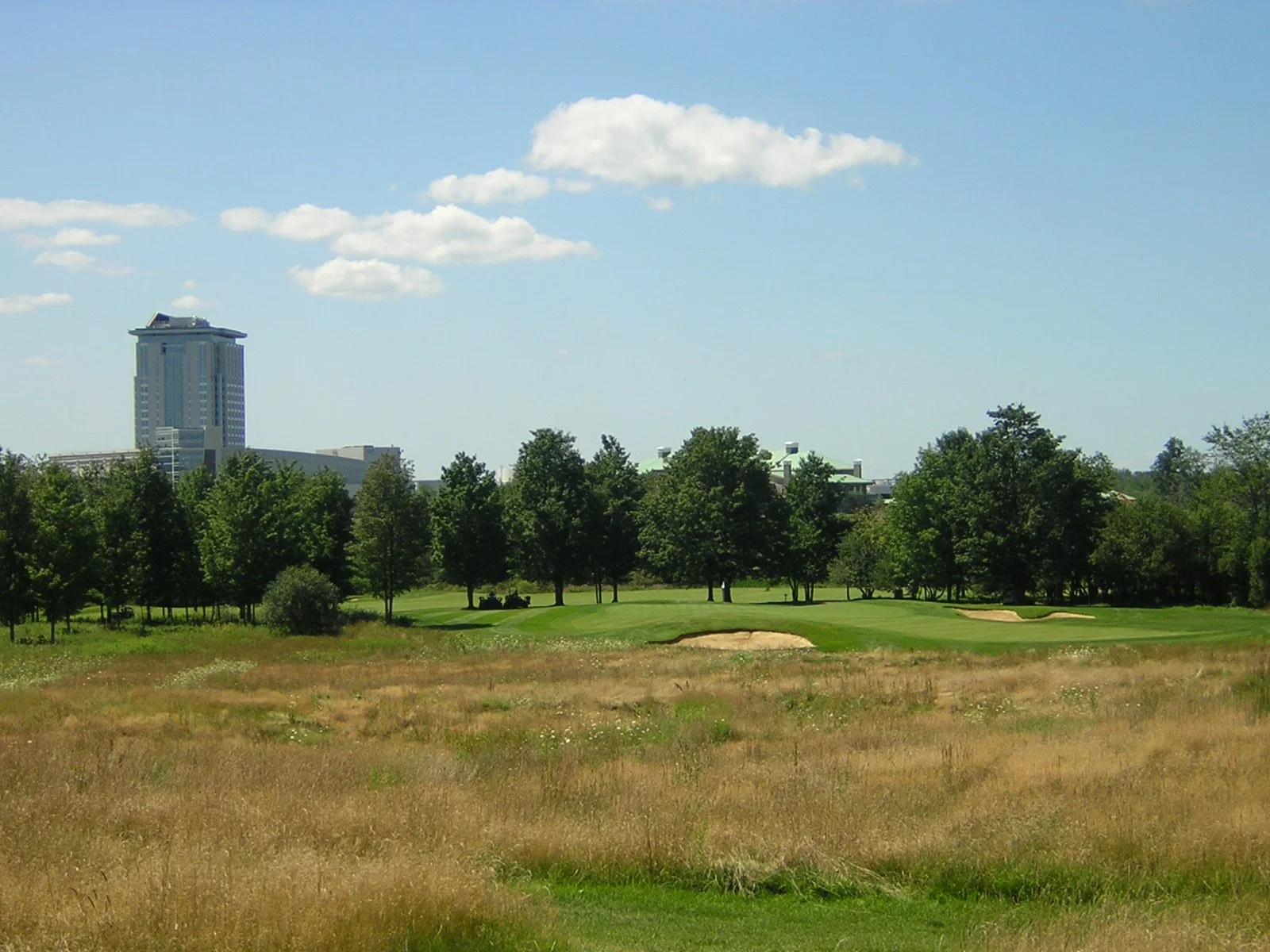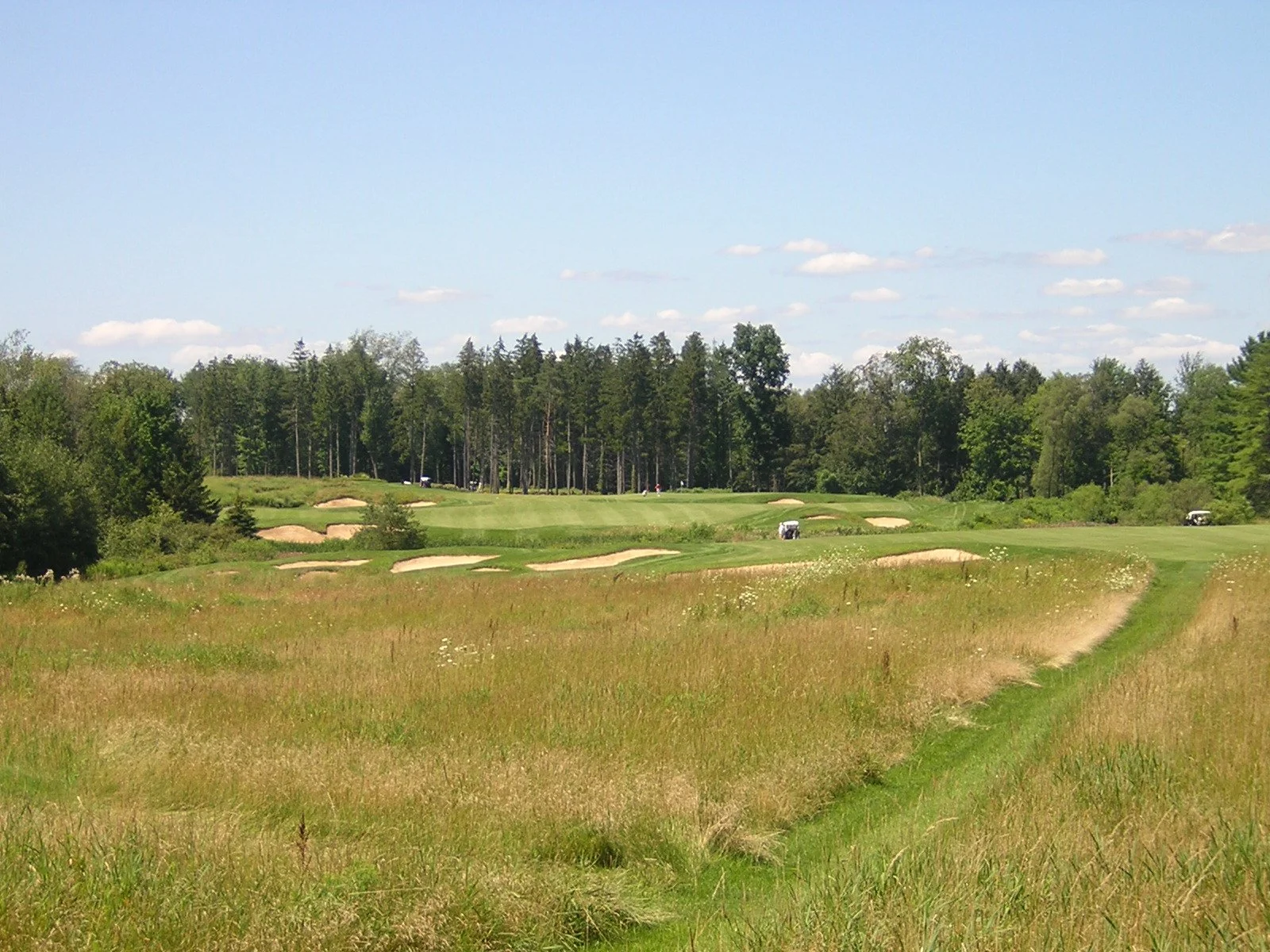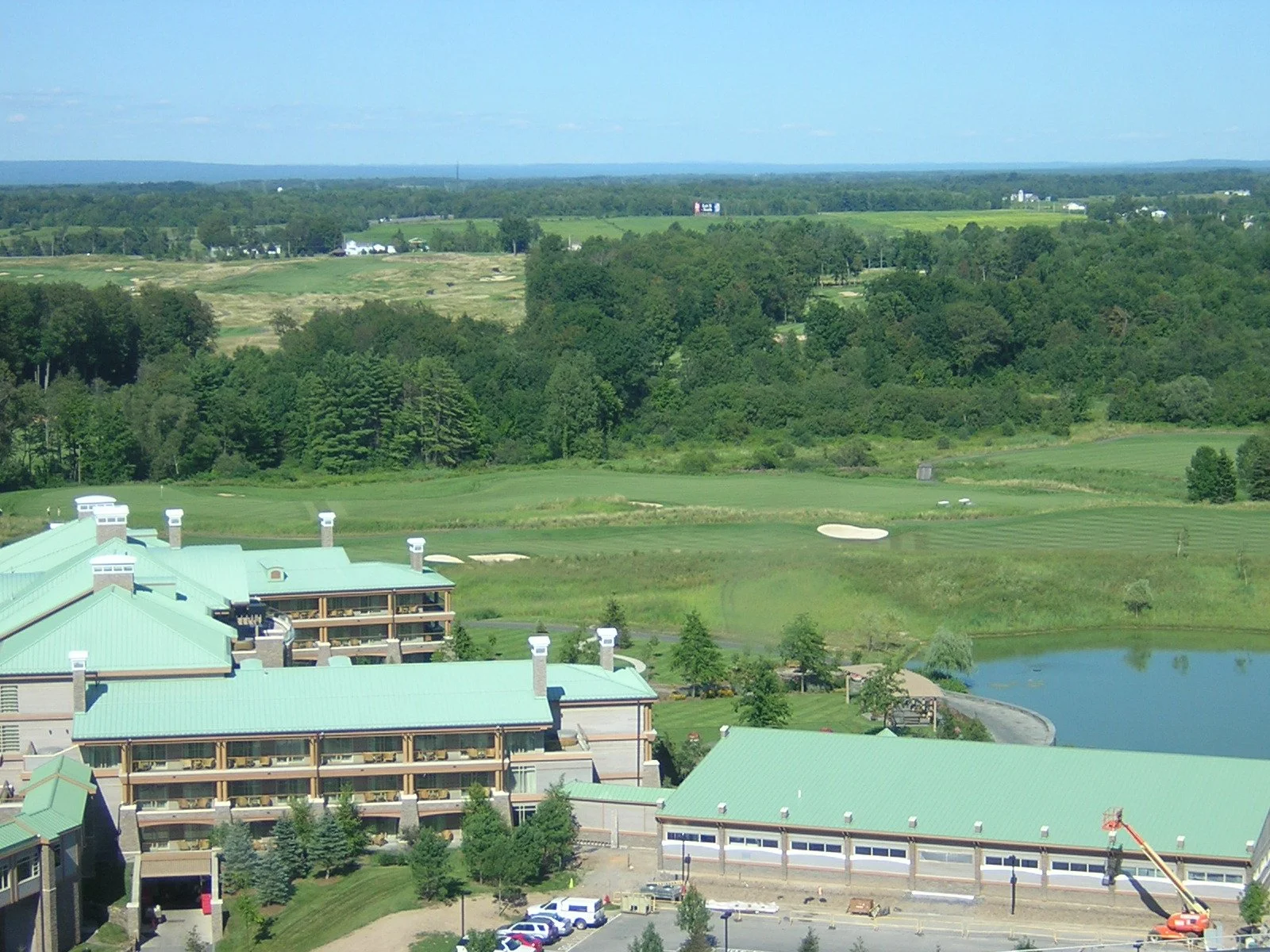SHENENDOAH GOLF CLUB
Course Architect: Rick Smith
Year Opened: 2000
Location: Verona, New York
Slope: 142. Rating: 74.1
Par: 72
Yardage: 7,129
Hole-by-Hole: 1 - Par 4 416 Yds 10 - Par 5 506 Yds
2 - Par 4 408 Yds 11 - Par 4 448 Yds
3 - Par 4 452 Yds 12 - Par 3 187 Yds
4 - Par 4 364 Yds 13 - Par 4 420 Yds
5 - Par 5 567 Yds 14 - Par 4 494 Yds
6 - Par 3 186 Yds 15 - Par 4 354 Yds
7 - Par 4 398 Yds 16 - Par 4 427 Yds
8 - Par 5 539 Yds 17 - Par 3 228 Yds
9 - Par 3 182 Yds 18 - Par 5 553 Yds
Par 36 3,512 Yds Par 36 3,617 Yds
Awards Won: #64 Top 100 Courses You Can Play - Golf Magazine (2006-07),
Rated 4 1/2 Stars - Best places to play - Golf Digest (2004-06),
#19 Best-in-State Rankings (New York) - Golf Digest (2005),
#3 Best State-by-State Public Courses (NY) - Golfweek (2004),
Top 10 New Upscale Courses - Golf Digest (2001),
Audubon International Certified Signature Sanctuary.
Key Events Held: PGA Professional National Championship (2006).
Website: www.turning-stone.com
HISTORY: The first course designed at Turning Stone Resort and Casino, Shenendoah Golf Club was crafted by Rick Smith. The resort features three championship courses -- Atunyote, Kaluhyat and Shenendoah -- along with a nine-hole course, purchased in 1999 and a par-three venue, also designed by Smith. Owned and operated by the Oneida Indian Nation, the resort features amazing accommodations, incredible restaurants, a terrific spa, stellar entertainment and of course a first-class casino.
Best known as a world-class golf instructor, teaching the likes of Phil Mickelson and Lee Janzen, Smith has more than dabbled in course architecture. With several outstanding designs in his home state of Michigan to his credit, such as Signature at Treetops Resort and Arcadia Bluffs, Smith was given the task of creating a unique track capable of hosting a professional event.
Smith was selected in part for his commitment to maintaining the integrity of the existing landscape. He used the natural lay of the land to create a wooded, parkland setting, complete with forced carries, tall fescue, wetlands, lakes, streams and tour standard conditioning. In all, the course features somewhat generous and mounded fairways and large contoured greens.
In 2006, the PGA of America staged its annual PGA Professional National Championship at Shenendoah and Atunyote. Shenendoah played to a scoring average of 70.53 and received high praise from the players. "Turning Stone has two really good golf courses in Shenendoah and Atunyote. They are very challenging and pleasing to look at and the conditioning is as good as you'll find anywhere," commented Mark Tschetschot, director of PGA Member Tournaments.
Jeff Coston certainly enjoyed the Shenendoah layout, as he carded a course record-tying, seven-under-par 65 in the second round, including nine birdies. After pars on his first four holes, Coston reeled off five consecutive birdies en route to an opening nine of 31. Overall, Coston finished in a tie for eighth, as he earned a trip to the PGA Championship at Medinah. He matched the course record of a trio of New Yorkers -- Mike Deuel of Endwell in 2003; Mike Gilmore of Locust Valley (2004) and Craig Thomas of Oceanside (2004).
An interesting note during the tournament: John Traub of Michigan aced the par-three ninth hole, his last of the day, to make the cut by two strokes.
The stylish clubhouse was completed in 2002, resembling a stone and cedar Tudor mansion. Blending perfectly with the surroundings, the clubhouse overlooks portions of the Shenendoah and Kaluhyat courses.
REVIEW: The course opens with a sensational, uphill par four stretching 416 yards from the black tees. Most venues start you off with a relatively simple hole, but not Shenendoah, as the first is the fifth handicap hole on the course. Bending slightly to the left and flanked by trees on both sides, this hole requires a big tee shot down the right side of the fairway, avoiding the bunker on the left. Did I forget to mention the 200-yard carry over wetlands to get your juices flowing? A mid-iron will be needed to cross another spot of wetlands to reach the undulating green that slopes hard from left to right. Two deep traps guard the putting surface, one in front and one deep, so take
enough club to get home.
It doesn't get much easier on No. 2, another rugged par four that plays straightaway to the green. Along the way you'll encounter sand left and right of the fairway and deep native grasses from tee to green. The left side of the landing area is the spot to be, thus setting up a short- to mid-iron to a very long putting surface. The two-tiered green is bunkered left and right, so accuracy is key in making par.
If you thought the first two holes were difficult, the third is the hardest hole on the course. A smart, 452-yard dogleg left around wetlands to the green, this hole is all about the tee shot. Three bunkers are strategically placed near the landing zone. One short, roughly 180 yards from the tee. One left, 215 yards from the box and one down the right, some 230 yards away. The
fairway is wide, but missing the short grass will result in bogey. A mid to long iron is the club of choice for your approach. At all costs, do not go left, as the hazard and a deep bunker await. A closely-mown chipping area right is the bailout option, so if all else fails, rely on your short game.
The shortest par four on the front side, the fourth is a dandy, dogleg left and just 364 yards in length. With a tail wind, the big hitter can go for the green, but beware, the tee shot is all carry over wetlands and a 40-yard long bunker. The proper play would be to take three-metal or a hybrid out to the right, setting up a little wedge to a long, narrow green. The putting surface is very undulating with a couple of ridges, one front and one deep and two traps on either side. A great hole to make birdie, but only with the proper tee shot.
Another shot at birdie, the fifth is the longest hole on the course, a whopping 567 yards from the tips. The fairway is gigantic, so take out the big stick and let it rip down the right side. This will set up a pair of options, either a blast to the green or the sensible play down the left. Going for the
green is dangerous, as several bunkers front the surface, not to mention the deep rough and trees down the entire right side. The left fairway with a long iron or hybrid will leave just a simple pitch to a green that can be had. Birdie is definitely in the mix and, who knows, maybe eagle.
The first par three on the course is all carry to a green surrounded by wetlands. A mid-iron will be needed to reach the putting surface, which is quite long and slopes from the middle to the front. A long bunker guards the left side of the green, while thick rough will capture any shot just right. Long and slightly right is certainly better than left and short. At least you'll have a fighting chance to get up and down.
Three-metal is the play on the straightaway, par-four seventh. Not overly long at 398 yards, wetlands and a lake run the gambit down the left, so safety first. Just a short iron should be sufficient to attack the green. Although the lake is left of the putting surface, there is plenty of room to the right. Just one trap guards the green on the left, so bail right to the chipping area if you must. The green is undulating and, depending upon the pin placement, provides a possible birdie chance.
One of the easier holes on the course, the eighth is a reachable par five. For starters, it's only 539 yards from the back markers. The forced carry over wetlands is only 150 yards, so don't be visually intimidated. The key, however, is the tee ball, which must avoid the two fairway traps, one center (235 yards out) and one right (280 yards away). Play down the left side of the landing area, leaving yourself a fairway metal to the green. Two thoughts of caution: Wetlands down the right run through the green, while trees left are to be missed. If you're laying up, a narrow fairway towards the putting surface awaits, so lay back appropriately. The green is heavily contoured and
runs away from the front, making a two-putt a real chore. Two decisive blows can conquer this beaute.
Club selection and pin placement will be the key ingredients on the par-three ninth. Similar in length to the sixth, the final hole on the outward nine plays over a lake to a decent sized green, which slopes from back to front. A deep bunker lays in wait on the left, especially with a back-left flag. There's plenty of room short and right of the green, so err right if you must.
If there was ever a birdie hole, it's the par five 10th. Straight up the hill, the only difficulty is keeping your tee ball in play. Two fairway bunkers, one on each side, along with thick rough are your obstacles. A fairway metal or hybrid will be able to get you home in two. A deep trap guards the right side of the green, so bail out left if you must. The putting surface is small, at just 28 paces deep, but it's very accessible. The green features a ridge in the center running to the back. At just 506 yards, this hole can be had.
Also playing uphill, the 448-yard 11th is just the opposite of 10, as this is a hole of survival. A well-placed tee shot will leave a mid-to-long iron to a fairly blind green, so accuracy and length is a must. The fairway is quite wide and avoiding the bunker down the left is key to have any chance at par. The putting surface is fairly benign, with just one trap, short and left to stand guard. Worse-case scenario, play to the right and chip it close to save par.
Another par three over water, the 12th requires just a mid-iron to a green well-guarded by sand. The lake short of the green should not come into play, unless you lay some sod off the tee, as it stands 20 paces before the putting surface. Two bunkers, one left and one right, protect the green, but the real difficulty could the surface itself. Quite long and sloping from back to front, a ridge separates the slope, so if the pin is back left and the wind has freshened, then you might need an extra club or two. Below the hole will take out all of the guess work.
A solid, dogleg left par four, the 13th is the first of back-to-back, links-style holes, devoid of trees, but complete with thick native grasses and sand. With a blast down the left side of the fairway, you'll set up the best angle to the green, as most shots will kick towards the right. The object is to
avoid the mounding and bunkering on the left, not to mention the trap on the right, some 277 yards away. A mid-iron will remain into a very undulating green, complete with three tiers, sloping from back to front. One deep trap guards the left, while thick rough surrounds the putting surface. Never be disappointed with par.
Without a doubt, the 14th is the most strenuous hole on the inward nine. A rugged 494 yards from the tips, this massive par four winds like a snake from tee to green. A series of traps guard the left side of the landing area, requiring a shot of 225 yards to clear. The fairway is narrow down the right with thick rough to catch the slightest of offline shots. Even with a successful tee shot, you're still left with a long iron or fairway metal. The one saving grace is that the putting surface is bowl-shaped and plays slightly downhill. The green slopes from back to center, so stay below the hole or right, where a chipping area lies in waiting. Left is sand and thick fescue -- or as I like to call it, bogey country.
The 15th might be the easiest hole on the scorecard, but it requires pinpoint accuracy on both shots. Just 354 yards, this uphill, dogleg left features a wide landing area, so three-metal should be the play to avoid the sand at the corner of the fairway. By the way, the left side of the hole from tee to green is a lateral hazard. Just a wedge approach should remain to an elevated putting surface that's 37 yards long. The green slopes hard from back to front, with sand fronting and deep, so make sure you judge the distance correctly. A front flag could result in birdie, but a back-left pin makes par a good score.
The final three holes at Shenendoah are among the finest trios at Turning Stone. Starting off with the par-four 16th, this slight dogleg left suggests a draw down the left side over a pair of crossing bunkers at the beginning of the fairway. At all costs, avoid the fairway bunker on the left, not to
mention the wetlands/hazard that runs through the green. The farther down the fairway you go, the narrower it becomes, so if you need to layup, take extra care. Another 30-yard plus green awaits a mid-iron, with only sand left as a detractor. Not really a birdie hole, so make your par and get ready for 17.
The longest par three on the course, this gem is 228 yards from the tips, playing slightly downhill. With native grasses blowing in the wind and the Resort tower in the background, this hole is quite the sight. Fairway metal or hybrid is most likely the play here to one of the smallest greens on the course. Sand well short of the green should not come into play, however the
well-contoured putting surface is not that easy to hit. A Y-shaped ridge rides the middle of the green, making two-putting a real chore. Short-right and left should enable you to get up-and-down for par.
It's possible to get home in two on the final hole, but it makes more sense to layup to a reasonable number to set up your birdie attempt. This sensational par five bends from right to left and crosses native grasses and wetlands en route to the green. Playing out to the right, your tee shot must carry 180 yards over wetlands and sand to reach the very generous, but sloping fairway. Your second shot will carry over 40 yards of hazard to another wide section of fairway. A pair of bunkers stand as a perfect target on either at the entrance to the fairway. Two words of caution as you approach the green: One, a deep, 10-yard bunker sits in anticipation at the 110-yard marker, and two, a
treacherous, grass hollow sits below the green to the right. The putting surface is quite undulating, with four distinct sections. Short-siding yourself on this hole could prove costly.
FINAL WORD: If someone put a gun to my head and made me pick between these three courses at Turning Stone Resort & Casino, I'd be six feet under. All three are quite memorable in their own way, especially Shenendoah Golf Club.
The superb conditioning, challenging layout, aesthetically appealing sites and quality staff will make your experience at Shenendoah an enduring one.
The course features generous fairways with fairly large greens, beautiful wetlands, thick wooded areas, colorful fescue grasses, extraordinary bunkering and beautiful vistas.
The carts are complete with state-of-the-art GPS systems, which will even keep your score. Sorry, eraser not included. The clubhouse, shared with the Kaluhyat course, is elegant and charming and the hospitality is second to none.
There are plenty of packages to choose from, which is the best way to go, since the resort has so much to offer in regards to accommodations, spa treatments, entertainment, full-service casino and amazing culinary options.
The bottom line is that Shenendoah Golf Club is a royal straight flush. So it comes as no surprise that it was ranked 64th in Golf Magazine's latest Top 100 Courses You Can Play.
Ron Philo Jr., who captured the 2006 PGA Professional National Championship, sang praises of Turning Stone: "These are as good of conditions as I've played anywhere." Runner-up Alan Schulte, who lost in a playoff to Philo, was equally impressed: "They're terrific golf courses that are in immaculate shape. They've done a terrific job and they've welcomed us, and we appreciate it."
Turning Stone Resort & Casino is a major golfing destination and if you love golf and a challenge, this should be your next stop. Bring the troops, you won't be disappointed.


